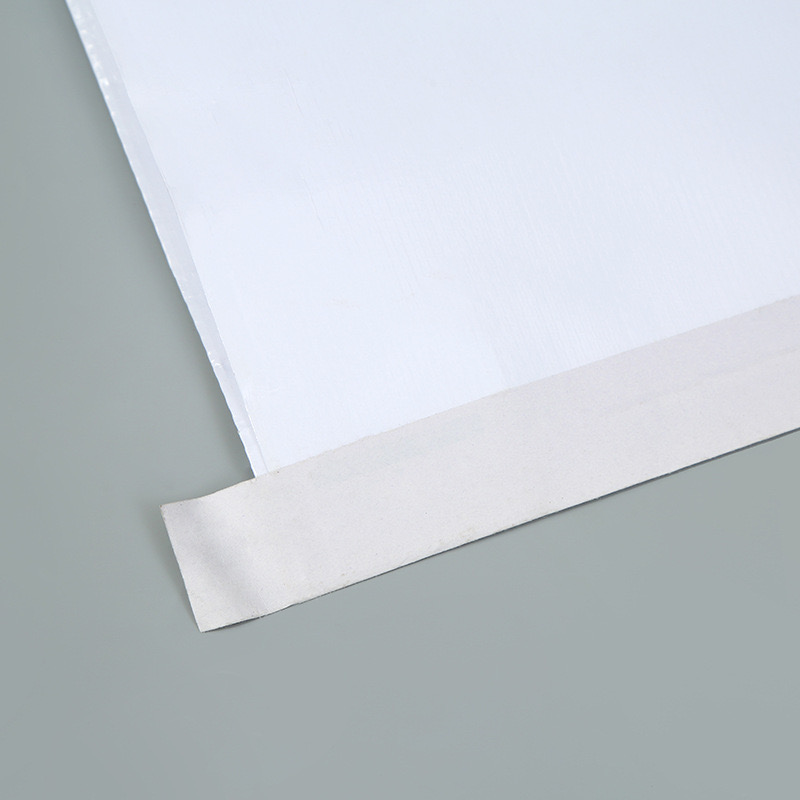
High-Density Polyethylene (HDPE) has become a popular material for manufacturing Woven Fabric Bags, Fabric Woven Bags, and other durable packaging solutions. This article delves into the unique properties of HDPE that make it ideal for such applications and explores how these bags excel in waste collection and recycling.
The Advantages of HDPE Material in Woven Fabric Bags
HDPE is renowned for its versatility, resilience, and environmental benefits. These attributes have made HDPE a cornerstone material for producing Woven Fabric sacks and PP Fabric Bags. Here’s a detailed look at why HDPE is a top choice for these products:
- Durability and Strength
HDPE offers exceptional tensile strength, ensuring that Fabric Woven Bags can handle heavy loads without tearing or deforming. Its robustness makes it suitable for industrial use, agricultural packaging, and more. - Lightweight Yet Sturdy
While being incredibly strong, HDPE is lightweight, which reduces transportation costs and carbon footprint. This is especially beneficial for large-scale logistics and storage. - Moisture Resistance
HDPE’s excellent water resistance ensures the protection of contents against moisture. This characteristic is particularly valuable for storing paper, plastic bottles, and other recyclable materials. - Customizable Properties
HDPE is highly adaptable. It can be engineered for specific requirements, such as UV resistance, anti-static properties, or increased flexibility, making it ideal for PP Fabric Bags and other custom packaging needs. - Eco-Friendly and Recyclable
Unlike many plastics, HDPE is recyclable and often used in sustainable packaging solutions. It aligns with global efforts to reduce waste and promote environmentally responsible products.
Key Parameters of HDPE Woven Fabric Bags
The following table outlines the typical parameters of HDPE-based Woven Fabric sacks used in various applications:
| Parameter | Specification |
|---|---|
| Material | High-Density Polyethylene (HDPE) |
| Fabric Type | Circular woven or flat-woven fabric |
| Weight | 60-220 GSM |
| Breaking Strength | 45-70 kg/cm² |
| Moisture Resistance | High |
| UV Stability | Customizable (up to 6 months or more) |
| Coating Options | Uncoated or laminated for enhanced strength |
| Applications | Waste collection, agricultural storage, etc. |
Applications in Waste Management
HDPE Woven Fabric Bags have proven indispensable for waste collection and recycling processes. Their durability, capacity, and adaptability make them suitable for handling diverse types of waste, including:
- Recyclable Materials
These bags are excellent for collecting recyclable items such as paper, cardboard, plastic bottles, and metal cans. Their lightweight nature ensures ease of handling while accommodating large volumes. - Construction Waste
HDPE bags can hold construction debris, including cement dust, bricks, and sand, offering a reusable and environmentally friendly solution for the construction industry. - Household Waste
For domestic applications, HDPE Fabric Woven Bags provide a cost-effective alternative for waste segregation, particularly for dry and recyclable waste. - Industrial Waste
Industries often rely on these bags for the storage and disposal of scrap materials, ensuring compliance with waste management regulations.
Why HDPE Bags Are Ideal for Recycling and Storage
Waste management requires bags that are not only sturdy but also capable of maintaining their integrity under various environmental conditions. HDPE Woven Fabric Bags excel in these areas:
- Puncture Resistance: HDPE fabric prevents leaks and ruptures, making it ideal for sharp or heavy waste materials.
- Reusable Design: Many HDPE bags are washable and reusable, contributing to a circular economy model.
- Custom Printing Options: Labels or designs can be added for sorting and identification, streamlining recycling efforts.
External Links to Explore More
For a detailed look at the role of Woven Fabric Bags in recycling, visit Woven Fabric Bags.
To learn more about the applications of Fabric Woven Bags, check out Fabric Woven Bags.
Conclusion: The Future of HDPE Fabric Bags in Waste Management
HDPE’s unique characteristics make it a frontrunner in the manufacturing of Woven Fabric sacks, Fabric Woven Bags, and PP Fabric Bags. Their integration into waste management systems has facilitated more efficient collection, storage, and recycling of materials. These durable, eco-friendly bags represent a significant step forward in addressing environmental challenges while meeting the practical needs of modern waste management.